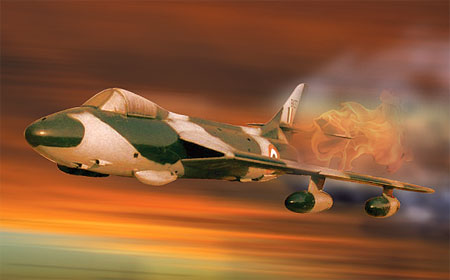INDIAN ARMED FORCES CHIEFS ON OUR RELENTLESS AND FOCUSED PUBLISHING EFFORTS

The insightful articles, inspiring narrations and analytical perspectives presented by the Editorial Team, establish an alluring connect with the reader. My compliments and best wishes to SP Guide Publications.

"Over the past 60 years, the growth of SP Guide Publications has mirrored the rising stature of Indian Navy. Its well-researched and informative magazines on Defence and Aerospace sector have served to shape an educated opinion of our military personnel, policy makers and the public alike. I wish SP's Publication team continued success, fair winds and following seas in all future endeavour!"

Since, its inception in 1964, SP Guide Publications has consistently demonstrated commitment to high-quality journalism in the aerospace and defence sectors, earning a well-deserved reputation as Asia's largest media house in this domain. I wish SP Guide Publications continued success in its pursuit of excellence.
- The layered Air Defence systems that worked superbly, the key element of Operation Sindoor
- Operation Sindoor | Day 2 DGMOs Briefing
- Operation Sindoor: Resolute yet Restrained
- India's Operation Sindoor Sends a Clear Message to Terror and the World – ‘ZERO TOLERANCE’
- Japan and India set forth a defence cooperation consultancy framework, talks on tank and jet engines
You Only Live Twice

On hindsight, I should have brought back the Hunter at the very first instance when the fire warning light had flickered and not pressed on the way I did. Moral of the story: even with all the good intentions, one can’t play with fire.
To borrow a quote from the famous James Bond novel: “You only live twice: once when you are born and once when you look at death in the face.” I am lucky to be alive to narrate a flying incident of my younger days which happened prior to the 1971 war. I was in No. 7 Squadron, the Battle Axes, flying Hunter aircraft at Bagdogra. Hunter was an excellent single engine aircraft of its time, highly manoeuvrable and yet a steady weapon platform. More importantly—it was also very forgiving to a rookie pilot. I was fortunate to have not only remained in the squadron but got my fully-ops (operational) status fairly quickly. This had also allowed me to take part in 1971 war, both on the eastern and western fronts.
Just prior to the war, I got my ‘clearance’ for conducting air tests on the aircraft. It was soon discovered by the squadron technical staff that I was somewhat lucky with the air test sorties. As one would know, the aircraft of that era did not have any Flight Data Recorders, which are now a great diagnostic tool for the technicians. In the three or four air tests prior to the incident, I had always brought back the aircraft in a fully serviceable state with no snags to rectify. It may have been a coincidence but somehow the elated look on the technical staff on my return made me also a very happy person.
With a tense war like atmosphere, aircraft serviceability was of prime concern for the squadron. It was with this background that I took up an aircraft for an air test after a 50-hour inspection. This particular aircraft had a snag of fire warning light coming on intermittently during the flight. Everything was normal throughout the profile and after about 35 to 40 minutes of flying as per the test profile, I still had about 10 minutes of fuel for handling and aerobatics. I was heading away from the airfield, opening throttle to gain speed when suddenly I thought I saw the fire warning light flicker. Instinctively, I brought the throttle back and tried to look for signs of smoke, both in the rear view mirror and towards the tail while turning back. There was no smoke and the JPT (jet pipe temperature) was also within limits. I thought that it was possibly the sun’s reflection, after all, the light had not flickered or come on during the entire profile even when I had opened full throttle a number of times. The snag had recurred but then I thought that the technicians would not know the exact parameters when the light had come on.
Contrary to the briefing and logic, I decided to try and note the exact settings when and if the light would come on again. I, therefore, planned a sort of safe procedure by going further away from the airfield and then turning back homeward at full throttle. Sure enough, after about a minute or so the light came on again. To my horror it did not just flicker but stayed on. I had noted the RPM (revolutions per minute) and JPT settings but now was keen to look for recovery if it was an actual fire. I took the usual actions of reducing throttle and looking for smoke but this time the light just stayed on. I gave an R/T call to the ATC for a rejoin stating my suspicion of a possible fire. I was cleared to land on direct long finals and for some strange reason when I lowered the undercarriage the light went off. I cleared off at the ORP (operational readiness platform) and switched off with the fire tender positioned appropriately. There was no fire and the aircraft was safe. The technicians were happy that they knew the exact parameters of RPM and throttle setting and could pinpoint the fault to a faulty temperature pick-up. The aircraft was made serviceable shortly thereafter. However, when I told the truth to the Flight Commander I got a mouthful and later in the crew-room I sulked to no end only because of my own fault.





